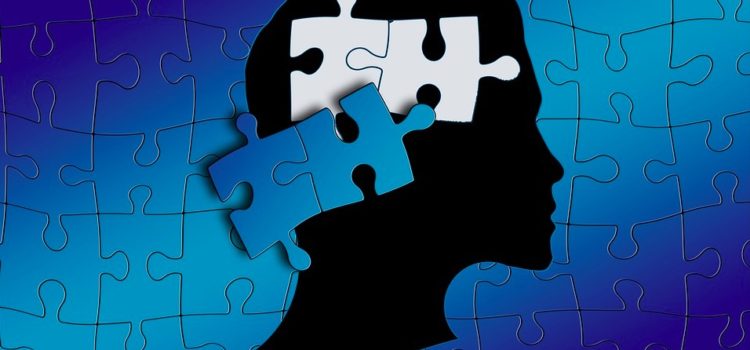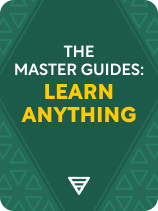

This article is an excerpt from the Shortform book guide to "The Master Guides: Learn Anything" by Shortform. Shortform has the world's best summaries and analyses of books you should be reading.
Like this article? Sign up for a free trial here.
What would you learn if you only knew you could? How might you get better at learning itself, opening the door to countless opportunities?
Research shows that, no matter your age or stage in life, you can learn anything you want. Not only can you acquire new knowledge and skills, you can get better at learning, which is a skill of its own.
Keep reading to discover how to improve your learning skills with advice and techniques from education experts.
Improve Your Learning Skills
Whether you’re in school, starting a new job, diving into a new hobby, or trying to keep up with an ever-changing workplace, the need to keep learning is a basic fact of life. However, you may have self-defeating attitudes that stop you from achieving everything you can—such as a belief that you’re not smart enough or that you have to be born with special aptitudes in order to master certain subjects or skills. Thankfully, there’s a wide array of research to the contrary. You can learn anything you want at any point in life. More than that, it’s now widely established that learning itself is a skill that can be learned.
We’ll draw from the work of education experts to lay out how to improve your learning skills. We’ll discuss adopting a healthy mindset toward learning, taking control of your schedule so that you can focus, and making the best use of various educational tools such as memorization, comprehension, learning from mistakes, and self-testing.
| Anyone Can Learn To illustrate the concepts in this guide, we’ll use the fictional example of Jack and Sara, two characters on different learning paths. Jack is a single father who’s always dreamed of playing the guitar. Sara, his daughter who’s applying to college, has set her sights on a career in engineering—but first, she has to pass her high school physics class. |
Adopt a Learning Mindset
The first step to learning anything you want is to believe you can learn anything you want. Commonly referred to as a “growth mindset,” this idea is rooted in the concept of neuroplasticity—the brain’s ability to change and adapt throughout our lives. In this section, we’ll discuss the characteristics of a growth mindset, the scientific basis behind it, and the practical steps and benefits of adopting one yourself.
In Mindset, psychologist Carol S. Dweck differentiates between a growth mindset and the more common fixed mindset, in which you believe your abilities are unchangeable and that you were born with a certain amount of intelligence. On the other hand, if you adopt a growth mindset, you view your innate abilities as a starting point on which you can build with hard work, persistence, and the right learning strategies.
In Limitless Mind, educator Jo Boaler explains that, any time you learn a new idea, your brain forms new connections, strengthens them with repeated use, and creates new links between preexisting neural pathways. The key lies in adopting the belief that you can learn. Research shows that your attitude toward learning has a direct impact on how your brain functions: People who believe they can learn show heightened levels of brain activity compared to those who believe their abilities are fixed.
Eliminate Unhelpful Beliefs
But, how do you adopt a healthy mindset toward learning if you’ve gone your whole life believing you can’t do it? In Limitless, life coach Jim Kwik lays out three steps to this process:
- Identify limiting beliefs. Be mindful of times when you tell yourself that you can’t do something.
- Find the facts. Discover what’s true.
- Form new beliefs. Replace your false beliefs with true ones.
A healthy mindset is also crucial to learning because unhealthy mindsets result in thoughts, feelings, and behaviors that hinder success. In The Only Study Guide You’ll Ever Need, Jade Bowler warns that a negative mindset triggers a fear of failure, which leads to procrastination and a lack of motivation. You may find that you have no desire to learn, either because you’ve given up or hold negative beliefs about your ability to succeed.
The Myth of “Learning Styles”
You may also harbor unhelpful beliefs about how you learn. There’s a common myth that everyone has a learning style—such as visual, auditory, or hands-on—and that you learn best when taught in a way that matches your learning preference. Instead, science shows that you actually learn best when you make use of multiple learning styles at once. Modern educators argue against the “learning style” theory while touting the benefits of engaging multiple senses in the learning process and embracing the aspects that cause you to struggle.
While it may be true that people have distinct preferences about the way they learn, in Make It Stick, Peter C. Brown, Henry L. Roediger III, and Mark A. McDaniel show that learning isn’t inhibited if the teaching style doesn’t match the learning style. In fact, everyone learns best when the teaching style matches the subject of the lesson.
Multisensory Learning
Regardless of your preferred learning style, you learn something even better if you see it and hear it. The more senses you engage in learning something, the better you’ll learn it.
Learning From Mistakes
Brain scans prove that students who spend time correcting their mistakes exhibit more mental activity than students who get the right answers initially. Therefore, when you have to fight through a problem, you’re creating more neural connections than you would have otherwise. Struggling to learn and making mistakes is what increases your mental capacity.
Optimize Your Focus
The next step in preparing yourself to learn is to set aside the time and create the right environment in which you can maximize your ability to focus. This involves prioritizing your activities, planning your schedule, eliminating distractions, and creating the proper atmosphere for yourself.
Take Charge of Your Schedule
Jade Bowler suggests you begin by writing down every obligation you have so that your commitments don’t crowd each other out. Next, prioritize your tasks and study plans based on 1) your level of understanding of the topic and 2) each task or plan’s deadline. Once you’ve prioritized your tasks, schedule a time to complete them. Bowler recommends scheduling your priorities and learning sessions week by week for up to a month in advance so that you can make the best use of your time.
Similarly, in How to Become a Straight-A Student, Cal Newport suggests planning out your whole day. When you have a plan, you can concentrate on what you’re doing. To manage your schedule, Newport’s book presents a method using a calendar and a list.
While Newport’s and Bowler’s instructions are tailored for academic students, they can be adapted for other lifestyle needs as well.
Remove Distractions
Learning How to Learn, Barbara Oakley and Terrence Sejnowski insist that, after setting aside time for learning, you need to eliminate distractions while you’re studying. Since you learn by connecting ideas in working memory, reducing the amount of memory that you have available will slow down your learning. Thus, in addition to blocking off time, you should silence your phone, find a quiet place to study, and ask your friends and family not to disturb you.
However, for some kinds of learning, a quiet setting might not be ideal. In Ultralearning, Scott Young argues that your ability to focus is influenced by arousal (how alert and energized you are). An environment that induces low arousal keeps your mind relaxed enough to take in new information. On the other hand, high arousal is effective for simple activities requiring lots of energy, like sports. You can thus improve your focus by adapting your environment to give you the optimum level of arousal for the task at hand.
Use Your Learning Toolbox
Once you begin the learning process, it only makes sense to use every appropriate tool you have available. After all, learning isn’t a singular process but is composed of many facets that all work together. These include committing information to memory, drawing a deeper understanding from new knowledge, developing skills through trial and error, and repeatedly testing your comprehension.
You may not always feel enthusiastic about the learning process. In Learn Like a Pro, Barbara Oakley and Olav Schewe recommend three types of goals that can strengthen your motivation and reduce the need to exert self-discipline. Long-term goals (like starting your own business) keep you focused on and excited about the future. Stepping-stone goals (like getting your MBA) are closer in time and help you reach your long-term goal. Process goals are short-term, actionable learning tasks (like studying for your MBA) that build to your stepping-stone goals.
| Example: Jack and Sara’s Goals Jack’s long-term goal is to eventually perform for other people, perhaps at an “open mic night” at his favorite neighborhood bar. His stepping-stone goal is to reach a skill level where he can learn new songs quickly, either by ear or by reading sheet music. His process goal is to learn one song well enough to play it from beginning to end. Sara’s academic goals are easier to define. Her long-term goal is a career in engineering. One stepping-stone goal is to get accepted into college. Her closest process goal is to pass her next physics exam. |
Memorization
Often, the first step in any learning process is to absorb and memorize new information. The trick is to do it in a way that lets you retain what you’ve learned and access it when needed. For this reason, it helps to understand how memory works, what practices help strengthen memorization, and what mental techniques make it easier to recall what you’ve memorized.
Oakley and Schewe write that, before knowledge can enter your long-term memory, it first needs to go through your working memory. Working memory temporarily holds facts, thinks through information, and solves problems. Working memory can only hold three or four thoughts at a time. However, the neural connections that your working memory creates eventually enter your long-term memory once those connections have been sufficiently strengthened.
So, how do you pass information from your short-term into your long-term memory? Jade Bowler states that your brain remembers information best by engaging with it repeatedly over time. Each time you review information, you’ll be able to remember it longer, eventually ingraining it into your long-term memory. You can also enhance this by connecting information to concepts you already know.
Oakley and Sejnowski explain how this works on the neurological level, in which memories are based on neural connections. Connecting a new neural pattern in your brain to an existing one makes the new data easier to retrieve. One example of how to connect neural patterns is to create mental pictures to represent the concept you’re learning, especially if the concept isn’t visual.
Many people try to burn information into their memories by rereading, but the authors of Make It Stick say this approach commits the information only to your short-term memory, making it a waste of time in the long run. Instead, the most effective way to improve retention of new information is through retrieval practice, which is any exercise that requires you to recall what you’ve learned. You can practice retrieval with classroom quizzes, flashcards, self-testing, and reflection.
Comprehension
The authors of Make It Stick suggest that, instead of simply memorizing information when you’re learning something new, you’ll gain a more meaningful understanding if you identify the underlying principles that will guide you when you use your new knowledge. One way to extract the main principles is to look at multiple examples at once to see the common thread more clearly. If you examine two different problems at once, you may notice similarities or differences that illuminate the underlying rules. Once you’ve found them, connect those principles with prior relevant knowledge.
Scott Young asserts that deep comprehension gives you a solid foundation that lets you build on your knowledge to understand even more complex ideas.
According to Boaler, another advantage of conceptual understanding is that it takes up less memory than lists of memorized facts. Furthermore, understanding how different ideas relate to one another creates new avenues for problem-solving.
Trial and Error
Learning isn’t a linear process. Instead, one of your most important tools is trial and error—the process by which you use your mistakes as a springboard for growth.
In The Art of Learning, chess champion Josh Waitzkin explains that, when you make mistakes, you can reflect on your errors and grow your skills. Each time you act, err, adjust, and repeat, you make an incremental improvement. You take one step at a time, sometimes succeeding, but often slipping up. Every incremental correction builds your knowledge—in other words, success lies on a mountain of mistakes.
One strategy to embrace this growth mindset is to focus your efforts on addressing your mistakes. Scott Young refers to this as “drilling,” in which you isolate a weakness in your learning process and concentrate intensively on it. The aspect you isolate will often be an integral component of the overall skill or subject you’re studying. In mastering it, you unblock areas of learning that are impeding progress. By addressing the most difficult aspects of the process, you reduce delays, learn to confront your weaknesses, and improve overall proficiency.
Self-Testing
Many experts agree that testing is a vital learning tool for improving your ability to recall and synthesize information. Self-testing engages your brain in different ways than simply absorbing information. And, by using appropriate techniques to your advantage, you can strengthen both your memory of a subject and the skills involved with it.
Oakley and Sejnowski write that the most effective form of studying is active recall, which consists of reproducing or rephrasing ideas from memory, rather than passively rereading them. If you’re memorizing facts, try to recite them or write them down from memory. If you’re learning a problem-solving technique, work through an actual problem. If you’re learning a hands-on skill, practice doing the work yourself. When you actively test your knowledge, your brain strengthens synaptic connections in ways that passive learning doesn’t.
Scott Young writes that, when learning new information, you should use flashcards or free recall (writing down what you remember from what you studied) to force your brain to retrieve information on its own. This helps you commit the information to memory. When testing yourself, Young also advises giving yourself time between study and active recall.
The authors of Make It Stick echo Young, saying that immediate feedback can become a crutch. The correction is so automatic that you begin to rely on that support, which inhibits you from truly learning and mastering a skill.
They also emphasize that self-testing should be difficult and frequent. More difficult retrieval leads to better retention. The harder your brain has to work to retrieve the information, the more firmly it cements it in your memory. Frequent testing also improves retention by deepening your comprehension and improving your ability to apply the knowledge in different contexts. And, the longer you continue regular testing—even after you feel that you’ve mastered the skill—the longer-lasting your retention will be.
Shortform Resources
For more on the science of learning, see the following guides:
- Mindset, Carol S. Dweck
- Limitless Mind, Jo Boaler
- Learning How to Learn, Barbara Oakley and Terrence Sejnowski
For strategies to improve your learning ability:
- Limitless, Jim Kwik
- Make It Stick, Peter C. Brown, Henry L. Roediger III, and Mark A. McDaniel
- Ultralearning, Scott Young
- The Art of Learning, Josh Waitzkin
- Learn Like a Pro, Barbara Oakley and Olav Schewe
For specific tips on academic learning:
- How to Become a Straight-A Student, Cal Newport
- The Only Study Guide You’ll Ever Need, Jade Bowler
Exercise: Consider How to Improve Your Learning Skills
Experts in the field of education agree that learning requires a positive mindset, the ability to focus, and a combination of various learning strategies. Think about how to apply all of these to any current or upcoming learning project you may have.
- What is your opinion about your own learning skills? Do you have any specific self-beliefs that may inhibit your ability to learn new ideas? (For example, you may think that you can’t learn a skill because you weren’t born with a specific talent.) How might you reframe those beliefs in a more productive light?
- To optimize your learning time, what would you have to do to rearrange your schedule? What particular distractions are you prone to, and how might you best avoid them?
- In the past, what difficulties have you had in memorizing and incorporating new knowledge? What techniques do you think would be effective to improve your mental retention?

———End of Preview———
Like what you just read? Read the rest of the world's best book summary and analysis of Shortform's "The Master Guides: Learn Anything" at Shortform.
Here's what you'll find in our full The Master Guides: Learn Anything summary:
- How you can learn anything you want at any point in your life
- Advice from experts on how to master the skill of learning
- A guide on how to improve your memorization, comprehension, and more






